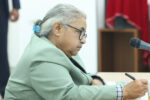When the COVID-19 pandemic hit Brazil’s economy, the country’s per capita income was already in steady decline.
It was 7% below its 2013 level in 2019, and further declines were expected in 2020. And yet not long ago, there was considerable optimism regarding the country’s economic prospects.
In 2012, shortly before the start of the economy’s decline, the International Monetary Fund’s Article IV assessment cited “a remarkable social transformation in Brazil, underpinned by macroeconomic stability and rising living standards.”
The IMF projected 4-5% annual GDP growth from 2013 onwards, and financial institutions and media outlets shared its optimism.
Brazil has since become one of the world’s largest food exporters. State-owned Petrobras, now one of the world’s largest oil and gas companies, is a technological leader in deep-water drilling and has transformed Brazil from a net importer of oil to a net exporter.
What happened? It’s not that Brazil doesn’t know how to grow. The Growth Commission identified Brazil as one of the few countries able to maintain high growth rates for more than 25 years after World War II.
Between 1950 and 1980, its economy grew at an average annual rate of 7%, with double-digit manufacturing growth. By the end of that period, Brazil’s manufacturing sector was more advanced than those of South Korea or India in terms of product diversification and sophistication.
With significant government support, Brazil developed one of the world’s largest aeronautics industries. (The crown jewel of that effort, Embraer, is now a private company.)
Successive governments supported the development of local varieties of a wide range of agricultural products, challenging received wisdom regarding the suitability of the country’s soil and climate.
Brazil has since become one of the world’s largest food exporters. State-owned Petrobras, now one of the world’s largest oil and gas companies, is a technological leader in deep-water drilling and has transformed Brazil from a net importer of oil to a net exporter.
What, then, explains the country’s post-2013 decline? The conventional answer is fiscal and quasi-fiscal profligacy.
Former president Dilma Rousseff spent her way to re-election in 2014, disregarding the long-term consequences for government coffers. Fiscal and monetary excesses preceded the 2014 election: delays in adjusting utility tariffs, an artificially overvalued exchange rate, and politically motivated credit expansion via state-owned banks.
These policies widened the fiscal deficit, fueled inflationary pressure, spooked foreign investors, and put public debt on a dangerous trajectory.
Soon after her victory, Rousseff changed course. Fiscal contraction, tariff adjustments, and higher interest rates triggered a decline in private investment and led to the current collapse in growth.
But this explanation is far from complete. The causes of Brazil’s economic malaise run deeper than Rousseff’s time in office.
First, the country’s growth foundations have weakened since 1980 – investment has decreased sharply, imports and exports as a share of GDP have declined and manufacturing has plunged from a quarter of GDP to about 10%.
Moreover, investment in infrastructure has declined to below-depreciation levels. With no industrial growth to absorb the labor power released from agriculture, and with formal labor highly taxed, the informal sector has dominated the labor market.
Brazil succumbed to the comfort of rigid rules. Macroeconomic policies were put on autopilot; any bout of inflation was met with interest-rate increases. With an open capital account, financial inflows grew.
Whereas Brazil’s per capita income was twice that of South Korea in 1980, it is now half. Optimistic forecasts by the IMF and others consistently ignored such adverse structural trends.
Second, Brazil has been successful when implementing its own policy solutions. It ended high inflation in 1994 through the “Plano Real,” a stabilization plan based on the insight that the inflation index itself could become the unit of account, and thus the basis for a stable currency.
This unorthodox plan, which the IMF declined to support, brought inflation down to single digits without the growth slowdown that typically accompanies stabilization.
A few years later, Brazil resisted “dollarization” pressure from the IMF, the United States, and financial investors.
Instead, it addressed the financial instability brought about by the 1997 East Asian crisis by introducing the “triad”: a commitment to primary fiscal surpluses (achieved through significant tax increases), a floating exchange rate, and central-bank independence with the sole objective of targeting inflation.
The triad was successful at containing inflation and stabilizing financial flows. But good policies seldom remain so forever.
Brazil succumbed to the comfort of rigid rules. Macroeconomic policies were put on autopilot; any bout of inflation was met with interest-rate increases. With an open capital account, financial inflows grew.
And the exchange rate was left to appreciate regardless of the consequences for exports or the real economy.
The “triad” policies were maintained long after they had stopped being useful. Interest rates, the world’s highest in real terms, have sustained an overvalued exchange rate, undercut exports, and made interest payments on public debt (which otherwise would have been manageable) Brazil’s largest fiscal-expenditure item (up to 8% in recent years).
But neither is responsible for Brazil’s weakened growth foundations, the lack of a development strategy, imprudent “imported” policy ideas, and rigid macroeconomic rules. Addressing these shortcomings will be the key to long-term prosperity.
Then, during Rousseff’s second term, just as the commodity boom was ending, the government lowered utility subsidies, cut expenditure, and increased real interest rates to several times the economy’s growth rate.
Economic contraction accelerated and unemployment increased. After Rousseff’s impeachment in 2016, the government reinforced expenditure cuts, again without a growth strategy. Declines in GDP meant lower tax revenues and increased public debt.
Applauded by the IMF, the World Bank, and the international and domestic financial press, the authorities persisted with austerity, persuaded that fiscal contraction was expansionary, even in the midst of a recession, because, by reducing expected future taxation, it would encourage entrepreneurs to increase their present investments.
But it is counterintuitive to expect entrepreneurs with existing idle capacity to expand such capacity even further.
Rousseff may have worsened Brazil’s economic travails during her 2014 presidential campaign, and they have certainly been exacerbated by COVID-19.
But neither is responsible for Brazil’s weakened growth foundations, the lack of a development strategy, imprudent “imported” policy ideas, and rigid macroeconomic rules. Addressing these shortcomings will be the key to long-term prosperity.
(Carlos Antonio Luque is Professor of Economics at the University of São Paulo. Simão Silber is Professor of Economics at the University of São Paulo. Francisco Vidal Luna is Professor Emeritus of Economic History at the University of São Paulo, and Roberto Zagha is a former World Bank Country Director for India and Secretary of the Commission on Growth and Development)
Copyright: Project Syndicate, 2020









Comment